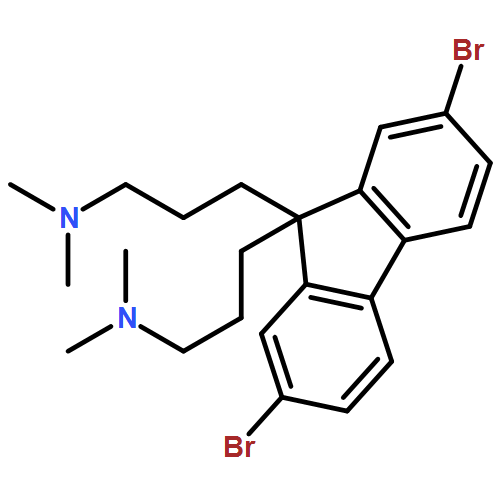•A family of aminoalkyl-functionalized blue-, green- and red-emitting polyfluorene derivatives were synthesized.•The aminoalkyl-functionalized copolymers exhibited dual functions of efficient light emission and electron injection.•Device performances can be optimized by varying the molar ratios of the incorporated aminoalkyl side groups.A family of aminoalkyl functionalized blue-, green- and red-emitting polyfluorene based copolymers were synthesized by Suzuki copolymerization. Dibenzothiophene-S,S-dioxide-3,7-diyl (FSO), 2,1,3-benzothiadiazole (BT) and 4,7-di-2-thienyl-2,1,3-benzothiadiazole (DTBT) were incorporated into the backbone of copolymers as blue, green and red chromophores, respectively. It was realized that for all these aminoalkyl functionalized copolymers, the thermal stabilities, UV–vis absorption and electrochemical properties are not affected by molar ratio of aminoalkyl side groups. However, the increased amino-groups content can induce the formation of excimer in FSO based blue-emitting copolymer, which in turn leaded to broadened photoluminescence and electroluminescence spectra along with decreased emission efficiency. In contrast, device based on green and red-emitting copolymers exhibited stable emission, and device performance improved progressively with the enhanced content of aminoalkyl co-monomers. Comparing to the copolymers without aminoalkyl side chains, aminoalkyl functioned materials exhibited distinctly improved device performances for the application as emissive layer in light emitting diodes using high work-function Al as cathode due to the formation of interfacial dipoles that can facilitate electron injection. The maximum luminous efficiency of 3.28, 7.31 and 0.79 cd A−1 was achieved based on copolymers BFN1, GFN15 and RFN15, respectively with device architecture of ITO/PEDOT:PSS/PVK/copolymer/Al. These results indicate that aminoalkyl functionalized copolymers can have great potential for the application as efficient light-emitting layer with high work-function/air-stable cathode.Graphical abstract

